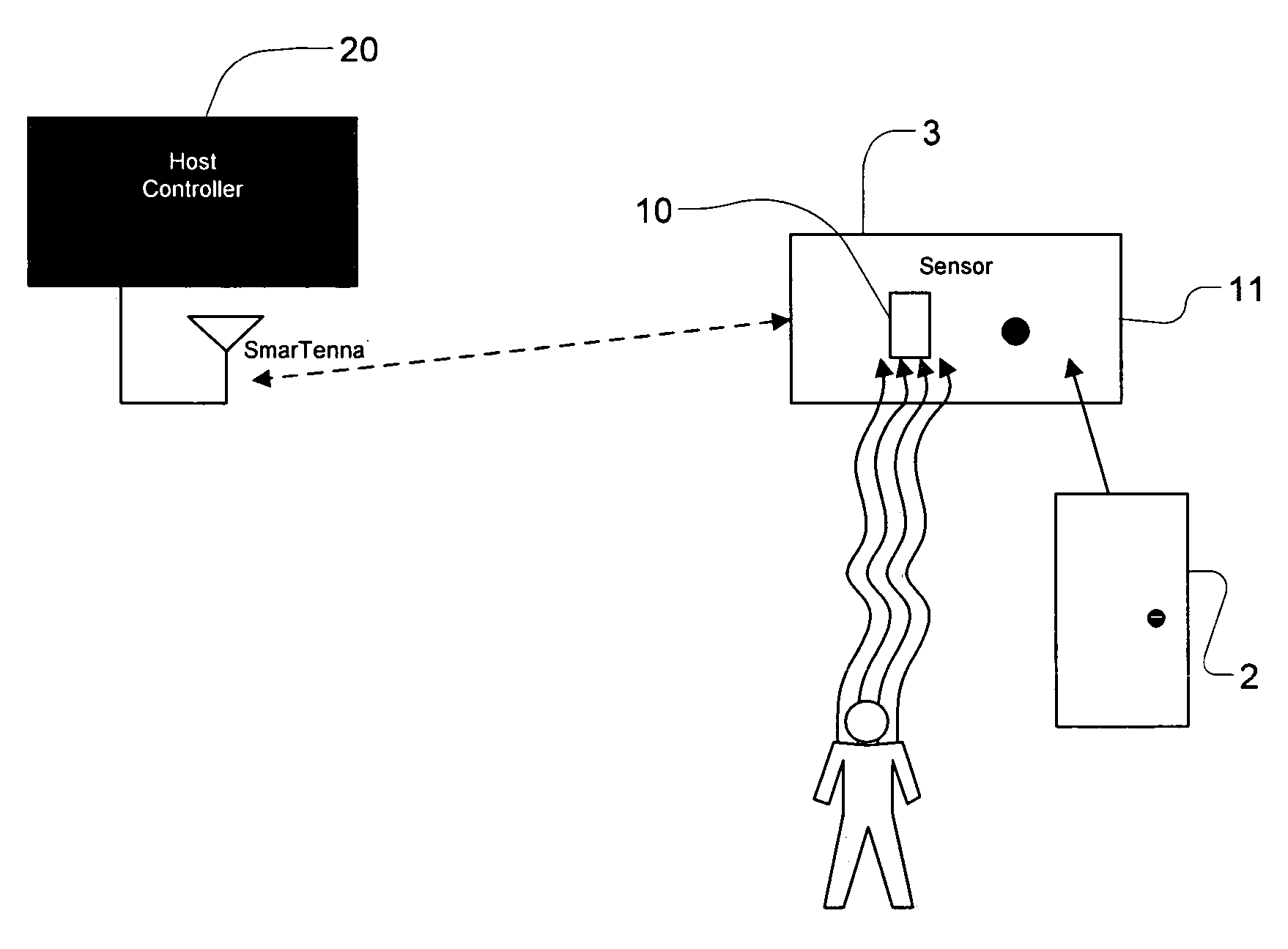Wireless integrated occupancy sensor
a sensor and occupancy technology, applied in the field of occupancy sensors, can solve the problems of insufficient accuracy of inability to accurately indicate the occupancy of rooms, and inability to use pir motion detectors as occupancy sensors,
- Summary
- Abstract
- Description
- Claims
- Application Information
AI Technical Summary
Benefits of technology
Problems solved by technology
Method used
Image
Examples
Embodiment Construction
[0017]The present invention is a battery-powered, wireless integrated occupancy sensor. In one embodiment, it is a small battery operated sensor to be used to determine if a controlled space, such as a room, is occupied. It will be used in conjunction with a fixed algorithm or programmable processor used as the controller of HVAC equipment, with which it will be in wireless communication, that needs occupancy information to optimize energy use in HVAC operations.
[0018]In one embodiment, as shown in FIG. 1, occupancy information is sought for a controlled space such as a room 1, with access door 2. The occupancy sensor 3 of the present invention is mounted on the door frame 4 holding door 2. A small magnet 5 is mounted on door 2 in proximity to the occupancy sensor 3 when door 2 is shut. A closer view of the door 2 and door frame 4 is shown in FIG. 2, which also shows the occupancy sensor 3 mounted on the door frame 4 and the small magnet 5 mounted on the door 2.
[0019]Another embodim...
PUM
 Login to View More
Login to View More Abstract
Description
Claims
Application Information
 Login to View More
Login to View More - R&D
- Intellectual Property
- Life Sciences
- Materials
- Tech Scout
- Unparalleled Data Quality
- Higher Quality Content
- 60% Fewer Hallucinations
Browse by: Latest US Patents, China's latest patents, Technical Efficacy Thesaurus, Application Domain, Technology Topic, Popular Technical Reports.
© 2025 PatSnap. All rights reserved.Legal|Privacy policy|Modern Slavery Act Transparency Statement|Sitemap|About US| Contact US: help@patsnap.com



